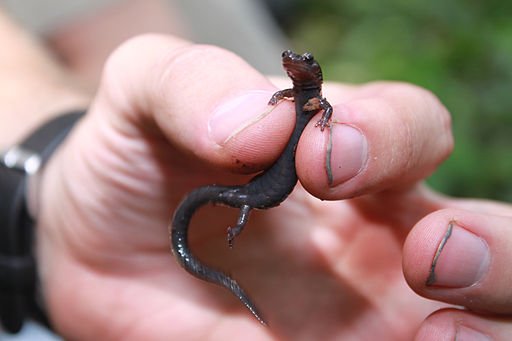Blight Cherry Trees

The blight that affects cherry trees is a significant concern for growers and gardeners alike. One of the most common and devastating blights is the Cherry Leaf Spot, caused by the fungus Blumeriella jaapii. This disease can lead to significant defoliation, reducing the tree’s ability to photosynthesize and ultimately affecting fruit production. The first signs of Cherry Leaf Spot are small, purple spots on the leaves, which can quickly spread and merge, causing the leaves to turn yellow and fall off.
Understanding the Cause
To combat Cherry Leaf Spot effectively, it’s crucial to understand its lifecycle. The fungus overwinters on infected leaves and branches, producing spores in the spring that can infect new leaves. Moisture plays a significant role in the spread of the disease; prolonged wet periods can lead to an explosion of spore production and dissemination. Understanding these factors is key to preventing and managing the disease.
Management and Prevention Strategies
Cultural Practices
Adopting good cultural practices is the first line of defense against Cherry Leaf Spot. This includes removing and disposing of infected leaves and branches, improving air circulation around trees to reduce moisture, and avoiding overhead irrigation which can exacerbate the problem. Mulching around the base of trees can help retain moisture in the soil and reduce the need for frequent watering, but it’s essential to keep the mulch layer thin and ensure it doesn’t touch the trunk to prevent moisture accumulation.
Chemical Controls
In cases where the disease is severe, chemical controls may be necessary. Fungicides can be applied, especially during periods of high risk such as in the spring when new growth is emerging. It’s crucial to choose fungicides carefully, considering their efficacy against Blumeriella jaapii, their environmental impact, and their potential to contribute to fungicide resistance. Always follow the label instructions for application rates and timings to ensure effective disease control while minimizing risks to beneficial organisms and the environment.
Biological Controls
Biological controls offer a promising approach for managing Cherry Leaf Spot, reducing reliance on chemical fungicides. Certain microorganisms, such as Bacillus subtilis, have been shown to have antagonistic effects against fungal pathogens, including Blumeriella jaapii. These biocontrol agents can be applied to the trees to enhance their natural defense mechanisms and suppress disease development. However, the efficacy of biological controls can vary depending on environmental conditions and the specific formulation used, so they are often considered part of an integrated pest management strategy.
Resistant Varieties
For growers looking to minimize their reliance on fungicides, planting cherry tree varieties with inherent resistance to Cherry Leaf Spot is a viable option. While no variety is completely immune, some have been bred to be more resistant to the disease. These varieties can significantly reduce the need for fungicide applications, although it’s essential to remember that even resistant varieties may require some level of disease management under heavy disease pressure.
Decision Framework for Managing Cherry Leaf Spot
When deciding how to manage Cherry Leaf Spot, it’s helpful to consider several factors:
- Disease Severity: Assess the current level of infection and potential for spread.
- Tree Health: Evaluate the overall health and vigor of the tree, as stressed trees are more susceptible to disease.
- Environmental Conditions: Consider weather forecasts, as prolonged wet periods increase disease risk.
- Management Goals: Determine whether the focus is on preserving tree health, maximizing fruit production, or achieving organic production standards.
- Available Resources: Consider the cost, availability, and environmental impact of different control methods.
Step-by-Step Guide to Integrating Management Practices
- Monitor Tree Health: Regularly inspect trees for signs of disease.
- Prune Infected Tissue: Remove infected leaves and branches, disinfecting tools between cuts.
- Improve Air Circulation: Ensure adequate spacing between trees and remove nearby weeds or obstructions.
- Apply Fungicides or Biocontrol Agents: As necessary, based on disease presence and environmental conditions.
- Maintain Soil Health: Promote beneficial soil microorganisms through the use of composts or manures.
Future Trends in Managing Cherry Leaf Spot
The future of managing Cherry Leaf Spot and similar diseases involves a shift towards more integrated and sustainable approaches. This includes the development of more resistant varieties, the use of precision agriculture techniques to minimize chemical use, and the exploration of new biological control agents. Additionally, advances in disease forecasting models can help growers predict and prepare for disease outbreaks more effectively, reducing the reliance on reactive measures.
FAQ Section
What are the first signs of Cherry Leaf Spot?
+The first signs of Cherry Leaf Spot are small, purple spots on the leaves, which can quickly spread and merge, causing the leaves to turn yellow and fall off.
How can I prevent Cherry Leaf Spot?
+Prevention involves good cultural practices such as removing infected leaves and branches, improving air circulation around trees, and avoiding overhead irrigation.
Are there cherry tree varieties resistant to Cherry Leaf Spot?
+Yes, some cherry tree varieties have been bred to be more resistant to Cherry Leaf Spot, although no variety is completely immune.
In conclusion, managing Cherry Leaf Spot effectively requires a comprehensive approach, combining good cultural practices, strategic use of chemical and biological controls, and the selection of resistant varieties. By understanding the disease, its lifecycle, and the available management options, growers can better protect their cherry trees and maintain a healthy, productive orchard. The future of disease management lies in integrating these practices with emerging technologies and sustainable approaches, aiming for a balance between disease control, environmental stewardship, and economic viability.

